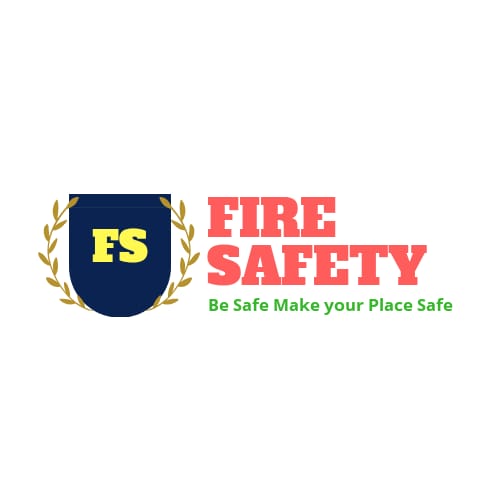Download---Sample Copy of Risk Assessment ---@ (https://bit.ly/3afUstw ) in Word format.
Risk Assessment can
be described as a Five-Step process.
Definition:-
⁸Risk
management: A general management functions that seeks to
identify, assess, address, control and review the causes and effect of
uncertainty and risk on an organization.
Download---Sample Copy of Risk Assessment ---@ (https://bit.ly/3afUstw ) in Word format.
Safe Regards,
Smart Safety Academy - Bhavnagar
Complete
Process of Risk Assessment
Legal
requirement of RA: ILO C-155, Article 15, impose a duty to
ensure that a workplace is so far as is reasonably practicable, without risk to
employees. A Risk Assessment needs to be carried out because to determine
whether or not something is “reasonably practicable.”
Objectives
of RA: The Objectives of
risk assessment are to prevent;
- Death and personal injury
- Loss Incident
- Breaches of statute law, which might lead to enforcement action or prosecution
- Direct and indirect costs that follows on from accidents
These Objectives relates directly to the Humanitarian,
Economic, Social, Legal and Productivity
AIM of Risk
Assessment: The Aim of risk assessment is to ensure that
hazards are eliminated or risks minimized by the correct application of
relevant standards.
Risk Assessment: “A
formalized Process of identifying hazards, assessing the risk that they
generate and then either eliminating or controlling the risk to an acceptable
level.”
Types of
Risk Assessment:
- Qualitative Risk Assessment: Risk can be described qualitatively using words such as high, medium, or low. There will always be some subjectivity involved since the words represent one person’s opinion of the risk level. Different individuals have very different personality characteristics, so two people may disagree on the level of risk inherent in a hazard. Qualitative Risk Assessment is an identification of all potential hazards and taking appropriate control measures. It’s very important aspect is to consider the effect of control measures provided in place and to think for the Residual risk and Residual Control measures only.
- Quantitative Risk Assessment: (QRA) –Here hazards potential is quantified, possible risk is also determined if failure rate date available and then it is compared with the ‘Permissible Standards’. This will indicate whether calculate risk is lower or higher than the permissible limit. Based on this, new control measures or modification in existing control measures cab be decided. Generally three methods of QRA ( 1) Matrix using material wise Risk Assessment (2) Matrix using Activity wise Risk Assessment (3) Methods based on computer model
1. Identify
the all potential hazards
Hazards can be identified using various methods such as task
analysis, legislation, manufacturer’s information and incident data and
reviewing the inspection report
2. Identify
the people who might be harmed and how
Workers, Contractors, visitors, and members of the public
and sometimes it is necessary to focus risk assessment on a vulnerable person
or group of workers such as young persons, pregnant women and nursing mothers,
disabled workers and lone workers etc.
3. Evaluate
the risk and decide on precautions
Risk can be scored or rated using a simple Risk = Likelihood
×Severity
calculation, where likelihood and severity are allocated numbers on a scale. If
the risk is unacceptable then controls must be introduced to either eliminate
hazards or create a safe place, or a safe person. Any residual risk must be
acceptable. Legal standards can often be used to indicate what level of risk is
acceptable(Below 4).
4. Record
the significant findings and implement them
The record findings of a risk assessment should be recorded
to provide a statement of the hazards in the workplace, the extent of the risks
that they present and the action taken to control those risks.
5.Review
and update as necessary
Assessment must be reviewed on significant change after an
incident and perhaps periodically.
Download---Sample Copy of Risk Assessment ---@ (https://bit.ly/3afUstw ) in Word format.
Know basic meaning of following terms which is used frequently
in Risk Assessment process. Many Student’s and Working professionals in the
OHSE does not know the different between hazard and risk, here we are going to
discuss process of risk assessment so make sure the meaning of following terms
in your mind .
Hazard: “Something
with the potential to cause harm.”
Hazard means the inherent property of a substance or unsafe condition,
unsafe action or situation to cause harm which may cause human injury, damage
to property or the environment or some combination of these criteria. (Types of
Hazards such as Chemical, Mechanical, Physical, Electrical, Environmental, etc)
Risk: “The Likelihood that a hazard will
cause harm in combination with the severity of injury, damage or loss that
might foreseeably occur.” Risk
means the likelihood, chance, Probability and frequency of an undesired event
(Accident, Injury or death) occurring within a specified period or under
specified circumstances and its severity, effect or consequences.
Risk Analysis: Technical
process of identifying, understanding and evaluating risk (analyzing cause and
effect wise)
Risk
Control: All activities associated with avoiding, preventing,
reducing or otherwise controlling risks and uncertainties.
Safe Regards,
Smart Safety Academy - Bhavnagar







1 comment:
Very nice blog! thanks for sharing..ISO 45001:2018 OHSMS LA
Post a Comment